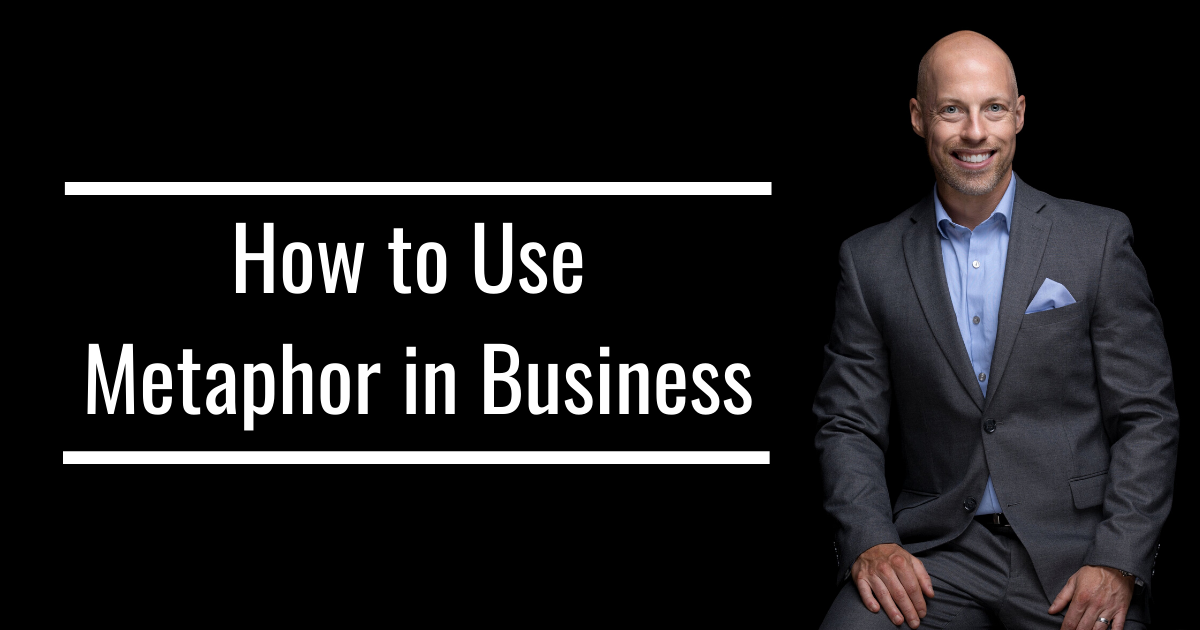
How to use metaphor in business
Key Takeaways:
- Metaphors facilitate communication.
- Metaphors simplify key ideas.
- Metaphors capture attention.
- Metaphors enhance people’s view of you.
- Metaphors add passion.
Metaphors are one of the most powerful tools that I use in business. They convert prose into poetry and transform even the most mundane business communication into an enticing and informative experience. Based on my experience, I have outlined practical takeaways that you can use to unleash the power of metaphor in your business interactions.
Metaphors breathe life into language and make ideas come alive, creating a bridge between concept and experience. Using them effectively is the difference between a mediocre or enthusiastic response because metaphors express meaning, context, information, and complexity in a compact space. Metaphors help you say more with less and help you distinguish your business value from competitors.
The best metaphors inspire interest and command attention, even on subjects people otherwise find uninteresting, helping people retain information longer. Mediocre metaphors may make your point, but don’t generate enthusiasm. Poorly chosen metaphors may even create a negative response from your audience.
For example, as I write this blog during the COVID-19 pandemic and the current racial outrage with law enforcement, many metaphors that were effective in 2019, are not wise to use now. I would question mentioning “viral” marketing, “spreading” ideas, or “vaccinating” employees against negativity. “Policing” one’s inventory, or “beating down” the competition would also raise eyebrows and unwanted ire.
Understanding your audience is critical. American football metaphors work exceptionally well in Boston but would fall flat in Mumbai. Mountaineering metaphors are welcome with outdoor enthusiasts in Denver but would be on their last legs with retirees in Miami.
Many common metaphors were exciting when first coined but have since overstayed their welcome or are inappropriate. Imagine explaining a financial plan to those retirees in Miami. Is there any advantage with advising them to “start with the low-hanging fruit,” which is overused and cliched, or warning them that “investments are a roller coaster”?
With the above perspective in mind, here are my top 10 takeaways on using metaphors in business:
- Use metaphors that address the positive experiences and passions of your audience. Doing this will secure their interest in your message.
- Avoid stale metaphors and create new ones instead. There are infinite possibilities.
- Steer away from metaphors about current events that evoke feelings of anger, sadness, outrage, or division.
- Keep it simple and use only one category. If you employ animal metaphors, don’t jump to weather metaphors.
- Use metaphors to create a picture that engages emotion, memory, and understanding.
- Since your goal is to make your content highly attractive, the metaphor should not overwhelm your message. Metaphors are most potent when their meaning builds subtly, slowly, and methodically.
- To find a metaphor unique to you and your business, think beyond what is expected. For compelling ideas, look around your office, your home, or think about your last vacation. You may find the treasure you seek by recalling a recent experience or browsing a travel website.
- Breathe life into your metaphors by adding details that appeal to your sense of beauty, taste, smell, texture, sound, and emotion. Like a good marketing campaign, your metaphor should be absorbing and persuasive.
- Test your metaphor before using it with an audience. Consider collecting responses from coworkers or trusted confidants. Be willing to discard your metaphor for a better choice.
- Take note of the metaphors being used by clients, customers, and competitors. These observations will provide a window of insight into their strategies, desires, fears, intentions, strengths, and weaknesses.
If you wish to dive deeply into the realm of metaphors, you can review this Google document that we used to research this topic.
